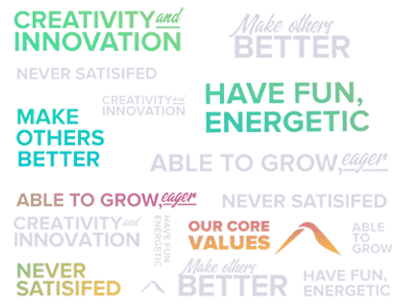1. Introduction
With the continuous change in customer expectations, it is significant that companies implement effective methods to meet such expectations. One of these methods is “tailored sales approach”. The hyper-competitive business world has several players and customers have better access to the products. Therefore, customers expect personalized experiences. Tailored sales approach leads to excellent customer experience, promote relationships, and enhance trust.
This blog explores the understandings of tailored sales approaches, its significance, and the challenges in implementing such tailored approach. Moreover, it includes the best practices of “How Tailored Sales Approaches Drive Success” and also discusses “The Power of Personalization in Sales”.
2. Understanding Tailored Sales Approaches
2.1 Meaning
A tailored sales approach is a plan that focuses on providing personalized experiences to the customers based on their needs, preferences, and behaviors. This minimizes the generic pitches, improves sales, and elevates customer’s satisfaction and loyalty.
Tailored sales approaches operate on customer data including previous interactions, transactional history, and background to provide a personalized solution.
2.2 The Significance of Tailored Approach
Tailored sales approaches hold a significant place in the growth and success of the business. Its importance includes:
- Competitive Advantage: Tailored sales approaches attract more customers, giving the business a competitive advantage over other market players.
- Buyer Expectations: Modern buyers prefer personalized experiences on every platform, eliminating the implementation of a one-size-fits-all sales approach.
- Developing Trust: With personalization, customers feel valued and understood, displaying that the company recognizes their needs. This leads to improvement in customer’s trust and reliability.

Source: Statista
3. Challenges of Tailored Sales Implementation
Tailored approaches offer various benefits; however, the implementation of such approaches attracts several challenges as well. It includes:
3.1 Data Management
The provision of tailored experience depends on the customer data. However, this includes managing a huge pile of data which can be difficult to handle.
Key Challenges:
- Data mismanagement across multiple departments.
- Incomplete or defective data.
- Failure to analyze the data and derive insights.
Read our whitepaper on Navigating Data Challenges For Call Center Operations And QA
3.2 Privacy Issues
Managing a huge amount of data also attracts security and compliance breaches. Therefore, it is essential for the company to protect customer’s data.
Key Challenges:
- Ethically obtaining customer consent for data usage.
- Protecting sensitive data.
- Complying with the applicable rules and regulations.
3.3 Scalability Issues
Providing tailored sales to a few customers is easy; scaling that to hundreds or more is difficult and resource-intensive.
Key Challenges:
- Maintaining effective personalization.
- Effective resource management.
- Handling personalization for all customers.
3.4 Overpersonalization Risks
Agents may sometimes overstep, which can invade customer privacy.
Key Challenges:
- Uncomfortable customers with all the shared data.
- Managing the customer’s preferences.
- Over-personalization leading to backlash.
3.5 Customer Segmentation
It is essential that customers are segmented into the right categories for effective personalization.
Key Challenges:
- Categorizing the customers accurately.
- Updating the categories based on behavior changes.
Insights:
- 71% of consumers prefer personalized experiences.
- 76% of consumers feel frustrated without personalization.
4. Strategies to Implement Tailored Approaches
Tailored approaches require planning and effective tools. Strategies include:
4.1 Data Analytics
Sales teams use CRM tools, social media, emails, and past interactions to deliver a personalized experience.
4.2 Understand Your Customers
Understanding customer needs and behaviors enables personalized pitches and better conversions.
4.3 Implement Advanced Technology
Use AI and automation to streamline personalization efforts and customer engagement.
4.4 Effective Sales Training Program
Train sales teams on active listening, empathy, and consultative methods to increase conversions.
4.5 Continuous Improvement
Regularly review metrics and performance to refine personalization strategies. Monitor key KPIs to adapt quickly.
Insights:
- 40% revenue increase through tailored approaches.
- 74% marketers have access to required data for personalization.
5. The Future of Tailored Sales
The evolution of AI, ML, and big data will continue to reshape tailored sales strategies. Key trends:
- Hyper-Personalization: Real-time data to create granular sales strategies. 86% of businesses see improved results.
- Voice and Conversational AI: NLP for personalized customer engagement.
- Omnichannel Integration: Consistent experiences across platforms.
6. The Power of Personalization
This involves much more than addressing customers by name—it’s about truly understanding their needs.
6.1 High Expectation of Personalization
Digital-savvy customers demand unique experiences based on preferences and behavior.
6.2 Personalization Improves Conversion
Better connections and tailored interactions convert leads into sales.
6.3 Adapting to Customer Journeys
Understanding where customers are in their journey helps offer the right value at the right time.

Source: LinkedIn
7. Conclusion: The Path to Sales Success
In the ever-changing business world, customer expectations evolve. Meeting those expectations requires tailored sales approaches. These approaches enhance competitiveness, improve conversions, and build loyalty.
Delivering tailored sales strategies offers both benefits and challenges. But by adopting advanced technology, using data analytics, and understanding customers, businesses can unlock real growth. Refining sales approaches with time and trends ensures long-term success.




